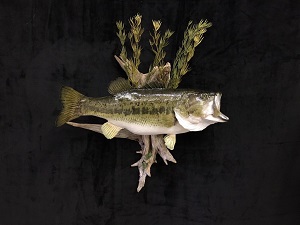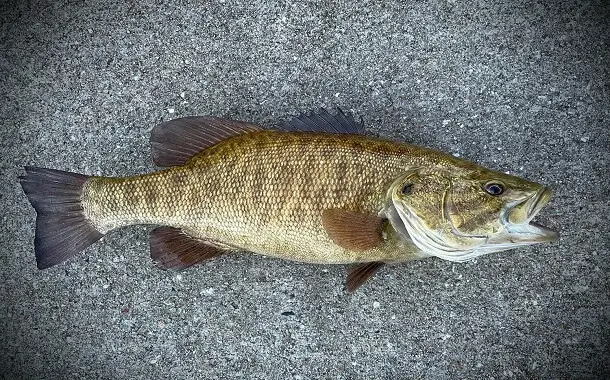Fish Taxidermy – How Much Does It Cost To Mount A Fish?
A lot of fishermen, be they experienced or not, want to get a good mount of a fish that is their personal best or a trophy fish.
If this ever happened to you, then you might have wondered how much it costs to mount a fish in a professional way.
This article will help you understand the ballpark range for a trophy fish hung on the wall, as well as individual aspects that will influence this price.
How Much Does It Cost To Mount A Fish?
The cost to mount a fish is anywhere between $12 and $22 per inch. This price will depend on several factors, including the size of your fish, its species, and the taxidermist you’re hiring for the job. Although most taxidermists charge per inch of length when stuffing a fish, there are some that will charge by the fish or by the hour.
To get real market prices, we have contacted several taxidermy shops and professionals around the US, and the prices we got are as follows:
| FISH SPECIES | PRICE PER INCH | KEY FACTS ABOUT FISH TAXIDERMY |
|---|---|---|
| Walleye | $13-$17 | Known for its reflective eyes |
| Bass | $13-$17 | Popular for freshwater displays |
| Trout | $16-$20 | Common in cold water streams |
| Pike | $13-$17 | Often displayed in action poses |
| Striped Bass | $17-$22 | Saltwater species with stripes |
| Salmon | $16-$20 | Migrates from freshwater to sea |
| Snook | $17-$22 | Found in warm coastal waters |
| Tarpon | $17-$22 | Silver fish popular in tropics |
| Billfish | $17-$22 | Includes marlins and swordfish |
| Replica fish mounts (all species) | $12-$18 | Fish replicas made from molds (silicone, fiberglass, or other materials) |
These are the prices that are commonly charged by reputable shops and individual professionals, although you will probably be able to find prices lower or higher than these.
Important tip: You will usually get what you pay for. You will probably get a lower-quality job with a really low-price deal. The mount might deteriorate quickly and need to be restored, which in the end, makes it more expensive than having it done properly right from the start.
Most taxidermists also have a minimum charge, regardless of the size and type of your fish. This means that you might actually get a higher cost per inch for a small fish like a panfish, so the job is worth the invested time for the taxidermist.
Of course, you can also try to mount the fish yourself, as a DIY project. If this is something you might like doing, then the internet is full of detailed guides on how to do it.
The cost of fish taxidermy depending on the fish type
When it comes to skin mounting, fish are classified into three main groups by professional taxidermists:
- Saltwater fish: $15-$20 per inch
- Coldwater fish (trout, salmon, etc.): $14-$18 per inch
- Warmwater fish (pike, walleye, bass, etc.): $11-$15 per inch
Warmwater fish is usually less expensive than saltwater or coldwater fish because it requires a longer drying process due to its skin being more oily.
The category of warmwater fish includes all types of freshwater fish species except for char, salmon, trout, and other types of salmonid species that belong to coldwater fish.
The price of trophy fish replica mounts
Replica fish mounts cost anywhere between $10 and $17 per inch. This is rather similar to the price of skin mounts, although it will be cheaper than mounting saltwater fish or coldwater fish.
You might also like our articles about the cost of a fishing license at Walmart, a European mount, or a deer mount.
Keep in mind that a replica mount will usually take a lot less effort even if it comes at a similar cost. This is because you only need to shoot some great photos and note the measurements of the fish for the taxidermist to be able to create the replica.
The good part is that replica creation won’t require you to keep the fish in good condition, so you can release it or, even better for some people, eat it after catching it. Even when you are left with no fish at all, you will still have a perfect model that you can hang on your wall and remind you of your big day.
One example of fishermen who prefer replicas are tarpon anglers and sportsmen. They will usually release giant tarpons after catching them, but they will still make a fish mount of the fishing trophy.
Skin mounts vs. replica fish mounts
As stated above, the two main methods for fish mount creation are skin mounts and replica mounts.
The first one, the skin taxidermy method, is made by removing the tail, head, and skin of the fish. You then wrap everything around a foam mold that has a similar shape and size to the fish.
This method will enable you to get the physical part of the fish that you caught in a stuffed approach.
The replica creation method, on the other hand, involves building very accurate copies of the fish you catch, although this will be 100% artificial.
This means that with the correct measurements of your fish and maybe one or two great pictures, you will be able to get a mount without keeping the actual carcass.
Some people consider that replicas aren’t very close to the original fish that someone has caught. Although true, keep in mind that the skin taxidermy is also built around a plastic or foam mold, and artificial colors are spray painted over the natural colors as they bleach out while the fish is dried.
Also, a really good taxidermist will be able to make a almost museum quality fish replica almost identical to the skin-type fish taxidermy.
So picking between these two types is more about your personal preference.
You should also consider that it will be pretty complicated to preserve and transport the fish correctly for a skin mount, even though the final process will have a more sentimental value, as you know that is the fish you caught. In this regard, getting a replica is a lot easier.
Getting fish taxidermy services
So what should be the steps after catching a trophy fish that you want to have stuffed?
The steps to follow will depend on the method you want to go with. If you choose skin mounting, then the process becomes more complicated as the fish will have to be preserved for taxidermy.
The first thing you need to do is figure out what the “show side” of your fish will be. This is the side you want to have on display.
The fish should be stored with this side up so that you avoid unnecessary abrasion. You should also avoid damaging the fish in any way, as gutting or bleeding it would make the taxidermy process harder.
Skin taxidermy steps:
- The fish has to be rinsed
- Wrap it in a moist towel
- You then put the fish that is wrapped in a towel in a large plastic bag and tape it shut
- Make sure the fish is with the show side up and place it inside a freezer
- Make sure it is completely frozen. For this, it will usually have to stay at least two days in the freezer
As soon as you have found a taxidermist willing to take on the job, you should use a courier service that handles frozen goods to send the package to them.
Replica creation steps:
Creating a replica involves fewer steps.
- As soon as you catch a fish, place it on a plane surface
- Take several great photos from a close distance, while making sure you’re covering all angles
- If possible, measure the weight of the fish
- With a tape, also measure and write down the girth and length of the fish
After you’ve found a shop or individual that can take on this job, you just send them all of the information you’ve gathered and they will do the rest. You don’t have to send them any parts of the actual fish.
Finding a good taxidermist to mount your fish
 The best way to make sure you’re working with a good taxidermist is to check their reviews and past work.
The best way to make sure you’re working with a good taxidermist is to check their reviews and past work.
If you have fishing buddies who have had their fish mounted, then ask for recommendations. Otherwise, angling forums can also be of great help. Whenever you receive a recommendation, look at photos of past work they have done.
When it comes to skin mounting, you should get a great result from the start, because repeating the process might ruin the fish completely. This is why we recommend you pay slightly more to work with a professional, instead of saving a few bucks initially but risking ruining the fish.
You’re not restricted to working with a professional animal stuffer around you, as most of them will accept fish from all over the country and will work through couriers.
Time needed to get a fish mounted
A turnaround of one year is pretty common among shops, although the exact length of time in your situation will be anywhere between 3 months and 2 years.
There are some types of fish that can be stuffed in less time, but the long turnaround is usually due to the big backlog that good shops have until they get to your fish.
Really professional shops have expedited services, so ask about this before you book your job.
Drying the fish will take around 6 weeks for warmwater fish and a lot more for saltwater fish and coldwater fish, so this is the longest part of the process.



Leave a Reply
Want to join the discussion?Feel free to contribute!